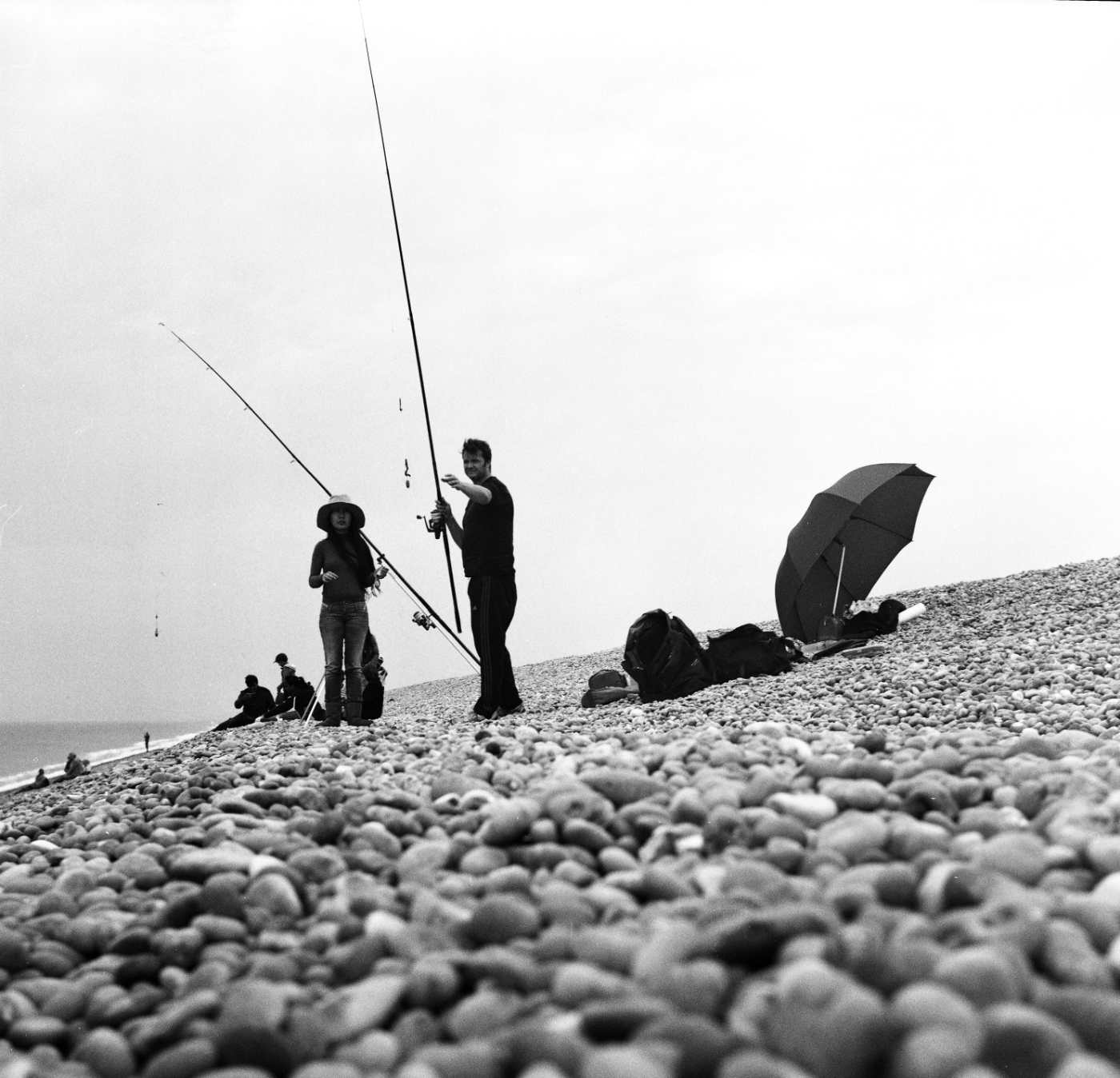Since I was a kid and to this day, a big reason why I love photography so much, each time I’d visit my family in Dorset I’d look through very old family albums.
Some of my favourite photos were some shot by my grand-father, Giles Richard Penn Goodden, pre WW2 circa 1934 with his medium-format twin lens reflex camera, the Rolleicord “Art Deco”. He was 20 years old.
Check out the 1934 selfie below which my grandad took. He called it "Alice Through The Looking Glass".
You can actually see the Rolleicord camera:
Having been in the Royal Navy from a very young age, he took his Rolleicord with him to incredibly remote and exotic locations (when you consider how many people traveled back then), documenting them and their people way before tourism boomed.
It’s absolutely mind blowing to look at photos of the Egyptian pyramids or China in the 1930’s, with no tourists spoiling the photograph and especially knowing that a family member captured them.
I will for sure write a separate post with these photos, they are fascinating.
The Rolleicord 1 “Art Deco” was the first Rolleicord, produced between 1933 and 1936, a simplified, cheaper version of the Rolleiflex but nonetheless a very attractive camera and efficient too.
Earlier this year I was chatting with my uncle, explaining how much I’d love to source the exact same camera and shoot with it, in a way connecting with my grandad who I didn't know well enough since he passed away when I was only 10.
It surfaced that my uncle still had the antique medium format camera stored somewhere. With the passion for photography I have, you can imagine my excitement and what ideas rushed through my mind. What condition could it be in? Was it still in working order? Could I even source film for it?
My uncle dug it out, still in it's original leather case, and handed it over to me.
In my eyes he was handing me a challenge, a mission.
It’s a sad admission but like many my knowledge is pretty much limited to digital cameras. Yes sure I have shot analogue in the past but nothing really advanced, more like holiday snaps on disposable cameras. I’m digitally self-taught.
Thank god for the Internet, it didn’t take long for me to find a manual (albeit from a slightly later model but still useful), buy black & white 120mm film and start looking at YouTube videos on everything from loading film to getting everything right before pressing the shutter lever.
So here I am loading my first roll, fairly straight forward actually, ready to shoot away!
And then there's the sudden realisation that I have no clue how to measure the aperture and shutter speed required and relative to the film ISO.
I mean... the camera has always done that for me, even though I never use auto mode, at least in manual mode I can use the live view to see the end result before I shoot.
So there are a few choices I have at this stage.
Buy a light meter
That way i just need to read the settings it suggests to me after the light reading and apply them. Easy enough but I have to buy one and frankly not knowing how well the camera has been preserved...not too keen on that yet.
The Sunny 16 rule
That's actually the easiest way to get started. In short, if it's a bright sunny day and your subject is well lit, set your camera on f/16 (hence the Sunny 16 name). Then, if your film is ISO100 the shutter speed should be 1/100. As simple as that. Or, if the film is ISO400, your shutter speed should be 1/400. I tried it and to my surprise it actually works! Unfortunately only for sunny days. There are other rules for overcast and other light conditions but it all becomes a little tricky to memorize (unless you give it time and practice).
Use your digital camera as a light meter
I know I know... I didn't invent the wheel but I kinda worked that one out myself anyway. I wasn't sure, but I guessed it should work. no? So I gave it a try. My film being ISO100 I set my OM-D to ISO100. Then wanting a slightly shallower depth of field I set both cameras on f/4.5. Now all I was missing was the shutter speed which my OMD generously gave me (automatically) as I aimed it to focus on what I wanted to shoot with the Rolleicord.
Voila!
Now, please note this is just a fun experiment for me, I'm not trying to teach anyone anything, just an honest account that I don't know everything to do with photography. Far from that.
It worked nicely enough though and I'm amazed at the quality of these shots which could rival my digital.
Here are some photos from my first couple of rolls out of an 80 year old camera:
I hope you enjoyed reading this and be sure to come back as I will be posting more as I improve my technique.
Nico






